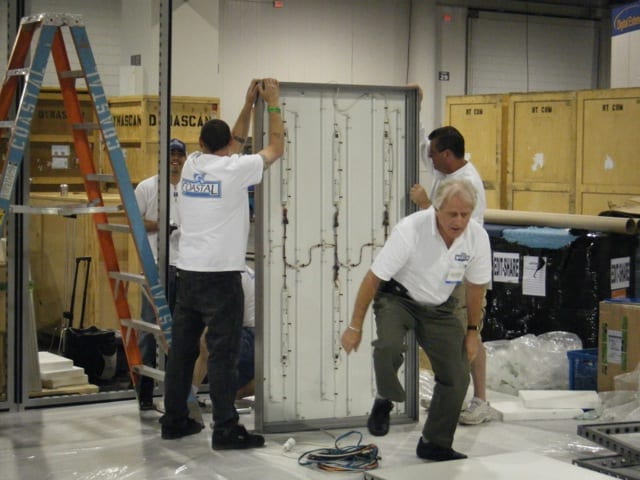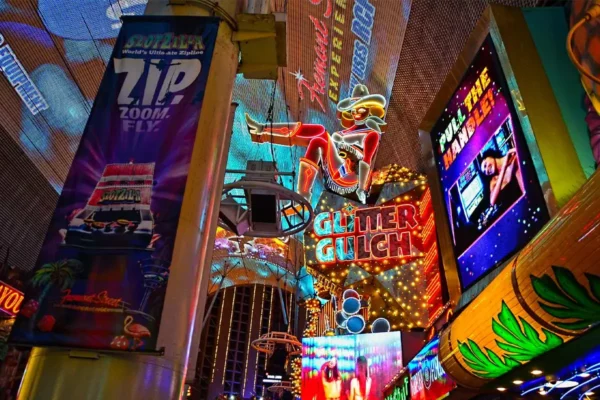by Liese Peterson
I am always delighted when TV networks re-broadcast The Wizard of Oz. I always connect it with the season between Thanksgiving and Christmas, when together with my brother and our parents, we would settle in with a big bowl of buttered popcorn, made by my bother on the stovetop, to watch it together.
In the big scene where Dorothy and her friends enter the Emerald City and are about to meet the great Wizard, one of my favorite lines from the movie is uttered: “Pay no attention to that man behind the curtain.” I can remember being a teenager when my dad would say, “You know, this is a circumstance where you really should pay attention to the man behind the curtain,” whenever he was talking about the need to see what was propelling one thing or another.
The lesson that smoke and mirrors often cloud the reality of something is one I’ve always enjoyed. After more than 20 years in the exhibit building industry, I often see the smoke and mirrors because it’s part of the business theater. Branding, marketing and showmanship are some of the more enjoyable aspects of marketing and positioning, but with exhibit building, as with anything else, it helps to know some inside tips so you can decide whether you want to “pay no attention to that (wo)man behind the curtain,” or whether you want to quiz them on whether their ideas, fees and practices are sound.
Several years ago, my colleagues and I had the chance to produce a workshop at EXHIBITORLive! called “Pulling Back the Curtain on Exhibit Costs.” Much has changed in even the few years since we produced it, but here are three quick lessons that can still help you keep exhibit costs contained:
- Remember that the exhibit designer is trained in all manner of things, not just aesthetic.
When we present ideas and designs to our clients, we strive to mention our designers’ credentials and training in detail. We do this not because we welcome the opportunity to boast, but because we want people to know that their exhibit design is so much more than “a random pretty picture.” You undoubtedly know that the people who are trained to do three-dimensional design have some preparation you might not have, but looking only at the exhibit aesthetics means you may not appreciate that the designer has considered:
- Traffic flow into the exhibit and out of it, from the perspective of the show and the exhibit’s orientation
- The process of a client or prospect from one spot to another in the exhibit
- The height, size and impression of key communication points inside the booth, so that your exhibit delivers the results you want
- The lighting and how it affects all the above items
- Your brand’s impact overall
- How the people staffing the booth will deal with the signage, the technology and more
No big surprises there, but invariably we see people focusing on the look of the exhibit. Yet your designer has thought about how the exhibit both will look and work when the hall is jam packed with people (as well as when it’s the last hour of exhibiting on the last day). Factor in conference rooms, demonstration areas, audio visual and technology enhancements, and you quickly realize that this should be done by someone trained to do it.
Now, how does this affect your costs? Well, if you evaluate the design on the basis of how attractive it is, chances are you may opt to change things that will diminish rather than enhance your impact. Meanwhile, the cost of your exhibit goes up because you’re asking for (sometimes self-defeating) design changes while lessening the oomph of your exhibit.
A simple example makes this especially thought-provoking. Recently, a client asked us to modify a design by putting a long, narrow table at the broad entry to an exhibit. Of course we were able to offer that, but by doing so, it blocked easy access to the demonstration areas and product displays. This was followed by a suggestion that we put a half-wall behind the table and put a large monitor on it. “Keep adding stuff,” and you’ll have a barrier between yourselves and the people you want to meet.
How to do better? Ask the designer better questions.
- Can you tell me about the traffic flow in the booth? How will we encounter customers and how will we lead them through our story?
- How are the graphics and branding designed so that someone who doesn’t know us and our company will be attracted to stop and talk?
- What specific features of the exhibit are you especially confident with and proud of? How can we make the most of what you’ve created?
- Remember the “Shrine of John Smith.”
When I was new to the exhibit industry, one of the salespeople in our organization who was very experienced took me aside and told me it was time I heard the story of the “Shrine of John Smith.” This particular John Smith was the tradeshow manager for one of the world’s foremost auto makers. His brand is known around the globe, and you would recognize the logo immediately.
The account executive in this case showed me the renderings of the initial design, and they were slick. The designers’ concept was so enticing that even the renderings made you want to get up front and personal with the vehicles in their exhibit. It was a perfectly designed Toyland for the tradeshow’s visitors and in terms of aesthetics, it was hot.
Then the salesperson said, “Now, let me show you what was actually built.” He rummaged in his briefcase and pulled out a separate file.
What I saw was a veritable forest of extremely high towers, about two feet wide, and 20 feet tall. From top to bottom, they were covered with repetitive logos, so that one was compelled to walk through a logo maze to arrive at the high point of the exhibit, where a car was displayed on a very high base, much like an altar, underneath a hanging sign the size of North Dakota, with spotlights trained on the car.
It was like a shrine to the car, but the abundance of logos on the surrounding maze of towers made it seem like it was a shrine to the marketing manager who had insisted on it. It was cold, impersonal, way overdone and impractical. And man, was it expensive! The budget was more than twice the client’s goal.
The marketing manager was overheard by several people during the tradeshow that he felt confident he would go down in the company’s history as the person who had really put the brand on the map. That the brand was already known worldwide and had a lot of brand equity was apparently not as important as his ego.
The moral of the story: It’s not just about branding. It’s about face-to-face marketing.
- Your shopping has a cost.
One of the things I try to remember to ask clients who’ve sent out an RFP is, “How many other firms are competing against us for your project?” I’m embarrassed to tell you that in the past, I’ve heard clients proudly reply, “Eight.” Or, “Five.” How on earth is this affecting your personal design costs?
The time and work to prepare a response to a request for a proposal is considerable, especially when the program is large, complex and international, or if it is fundamental to the launch a new product. New product launches make up a considerable part of the new business available to exhibit builders, and as a result, these ground-floor opportunities are hugely attractive.
I remember when a company where I worked was responding to an RFP to obtain an initial project worth about $750,000. We had a team of five or six people on two continents doing research, drafting designs, crafting messaging and traveling to international meetings. I don’t know the specific final totals, but my guess is that considering the labor of the people who crafted the RFP response and their travel, it was at least a third to half the value of the first project.
I had the chance to see the work of two of our competitors after we were awarded the project. Their proposals were stunning, and obviously they had outspent us in a couple of ways.
Who pays for that? The client does. When I hear that a firm is asking more than two or three companies to provide input, I start making a case that this practice increases everyone’s costs. The cost of your proposal response will ultimately be paid for by someone, and it might very well be you who are paying for the indulgent egos of people who want to see more than three proposals for their budget.
Respect your industry and respect your vendors. Please don’t indulge in frivolous pursuits, even if you can. It doesn’t generate mutual respect, and it drives up everyone’s costs. Just as importantly, it’s more likely to hurt the smaller, newest entries into our industry, on whose success our future lies.
Have you got some great tips for keeping exhibit building costs low? Drop a line to ECN at newsdesk@exhibitcitynews.com and share your best ones!






























